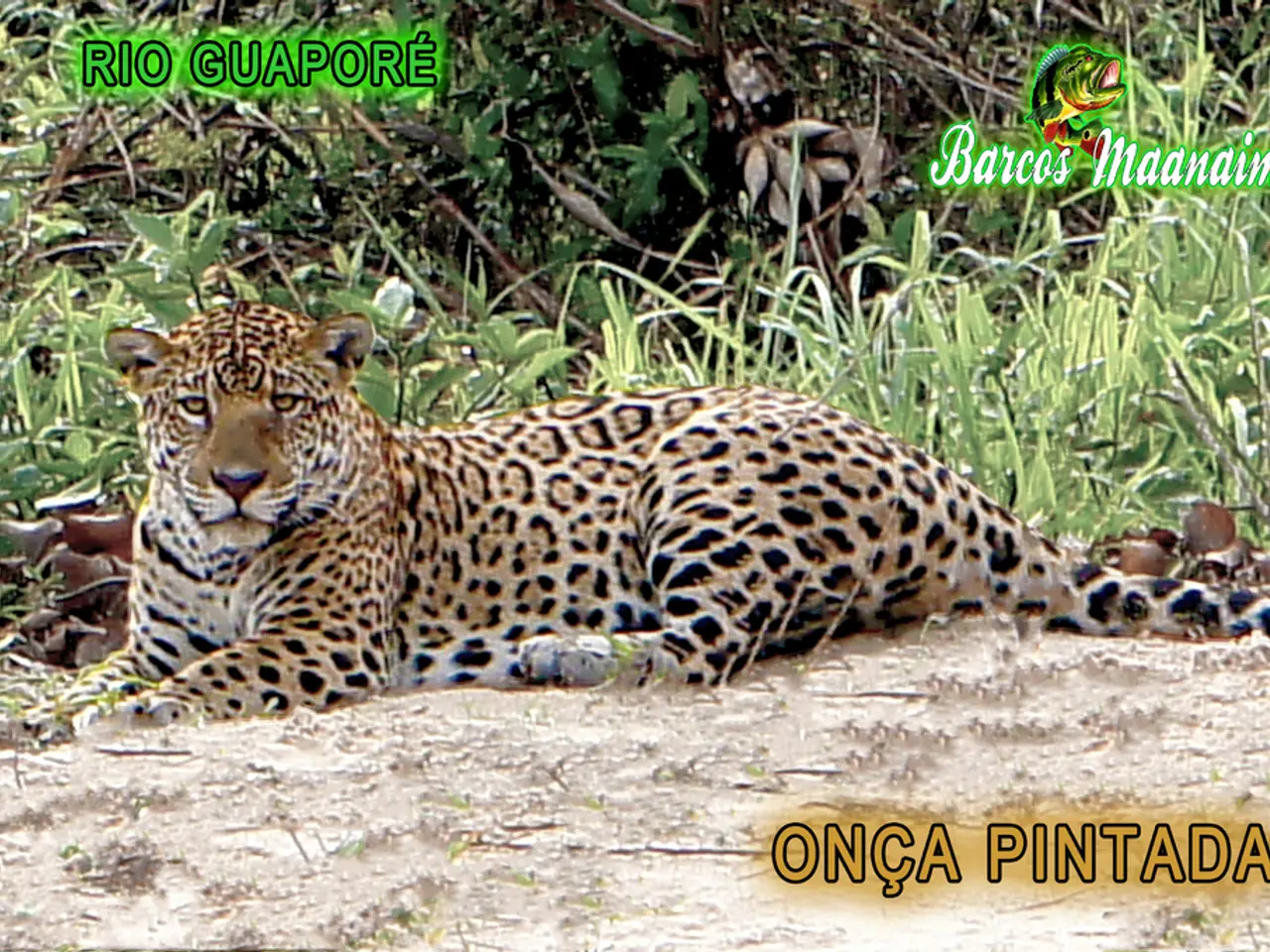"All Species on Earth Practice Some Form of Self-Medication": The Self-Healing Practices of Wildlife Animals
In the intricate tapestry of life, animals have shown a remarkable ability to take care of their health through a behavior known as zoopharmacognosy. This practice, observed across various species, involves the use of plants, soils, insects, and other substances to prevent or treat health conditions.
A striking example of this behavior can be seen in Sumatran orangutans, such as Rakus. Rakus, who was observed chewing the leaves of the Akar Kuning plant (Fibraurea tinctoria) and applying the juice to a facial wound, healed without infection [1][2]. This suggests that Rakus' self-medication behavior could be a result of accidental contact with the medicinal plant.
However, in some cases, aspects of self-medication behavior may be innate. For instance, some black-handed spider monkeys have been observed partaking in recreational drug use, consuming boozy fruit [3]. In contrast, learning could play an important role in propagating self-medication behaviors in social species, like chimpanzees, who have been observed consuming the plant Vernonia amygdalina to treat parasite-related diseases [4].
Natural selection could also play a role in the development of self-medication behaviors in animals. For example, parrots and other animals eat clay to neutralize toxins in their diet, while goats may self-medicate using plants with anthelmintic properties to counter gastrointestinal worms [2].
Interestingly, some animals, like humans, are capable of taking care of themselves, and the knowledge of this should deepen our understanding and respect for other species. The medicinal properties of plants and other natural materials, as observed in animals, could enrich our own drug cabinets.
Moreover, the recognition and application of substances with medical or functional properties to wounds may be a common underlying mechanism for great apes and humans. A 2022 study reported chimpanzees applying insects to their wounds for the first time [6].
Insects, too, engage in self-medication. Woolly bear caterpillars deliberately eat poisonous plants to rid themselves of parasites or boost their immune systems [2]. Ants, on the other hand, mix tree resin with formic acid to create antimicrobial substances protecting their colonies [2].
Dogs and cats, like their wild counterparts, have been seen chewing grass to induce vomiting and rid infections from their stomachs [5]. These observations underscore the widespread nature of self-medication behaviors across the animal kingdom.
In conclusion, the practice of self-medication, as demonstrated by animals, provides valuable insights into the evolution of similar behaviors in humans. It also serves as a testament to the incredible adaptability and intelligence of our fellow creatures on this planet.
References: 1. The Sumatran orangutan Rakus self-medicates with Akar Kuning (Fibraurea tinctoria) to treat a facial wound 2. Zoopharmacognosy: Animal self-medication by the use of natural substances 3. Evidence for recreational drug use in wild black-handed spider monkeys (Ateles geoffroyi) 4. Chimpanzees (Pan troglodytes) use medicinal plants as antiparasitics 5. Self-medication in domestic animals: a review 6. Chimpanzees apply insects to wounds for the first time
- The remarkable self-medication behavior observed in various animals, such as Sumatran orangutans and even insects, could potentially contribute to broadening our drug cabinets in medicine.
- Natural selection may have played a role in the development of self-medication behaviors in animals, with examples like parrots consuming clay to neutralize toxins and goats using anthelmintic plants.
- Self-medication behaviors, particularly in social species like chimpanzees and great apes, might be a result of both innate and learned responses, as shown in their consumption of medicinal plants to treat diseases.
- Evidence suggests that animals, much like humans, are capable of taking care of their health through practices like self-medication, adding to our understanding and respect of other species' intelligence.
- Science has shown instances of animals like dogs and cats self-medicating, such as eating grass to induce vomiting or treat infections, highlighting the widespread nature of such behaviors across the animal kingdom.
- Insects, too, engage in self-medication, for instance, woolly bear caterpillars consuming poisonous plants to boost their immune systems or ants mixing tree resin and formic acid to create antimicrobial substances.




